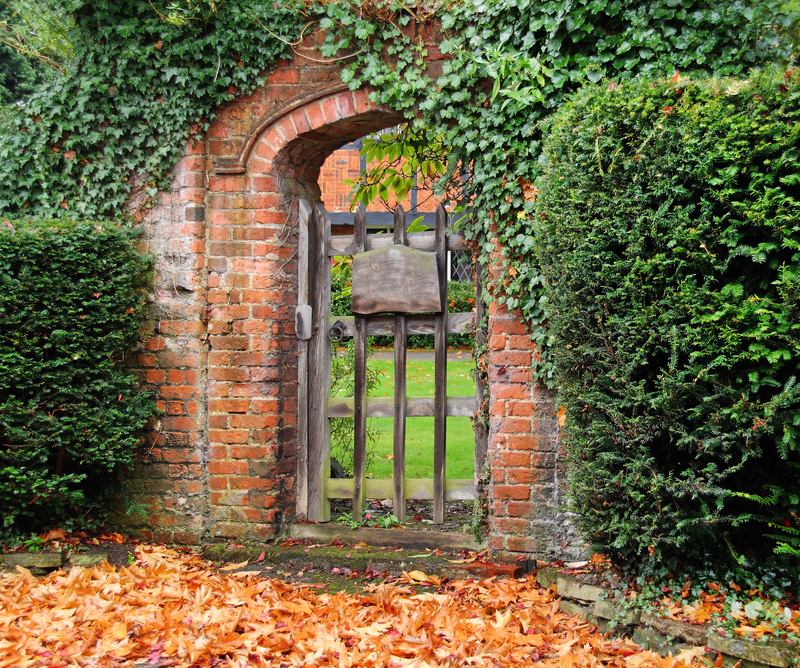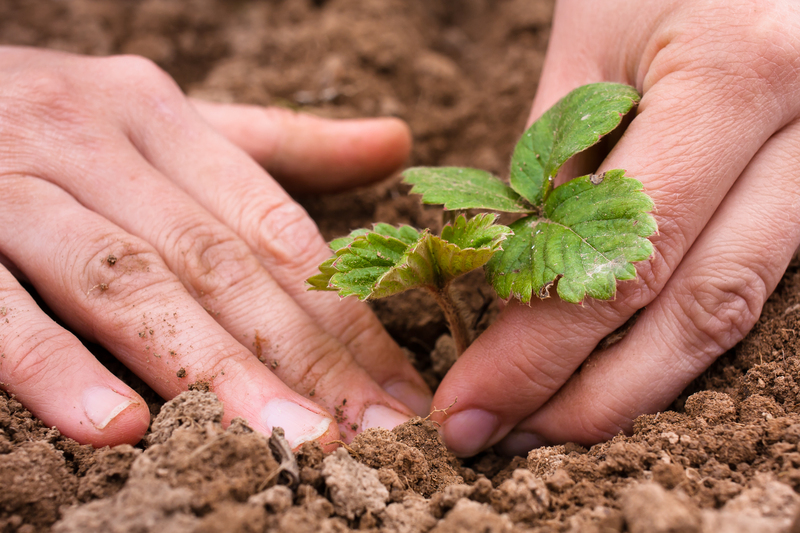Fun and Safe Gardening Tips When You Have Dogs
Posted on 28/05/2025
Fun and Safe Gardening Tips When You Have Dogs
Gardening is not only a wonderful hobby but also a fantastic way to improve your home's curb appeal and enjoy the great outdoors. However, if you're a dog owner, you know that maintaining a beautiful garden with dogs can come with its own set of challenges. From digging and chewing to ensuring poisonous plants are avoided, a dog-friendly garden requires careful planning and consideration.
In this comprehensive guide, you'll discover a host of fun and safe gardening tips when you have dogs. Whether you're looking to prevent harmful exposures, encourage playful interaction, or simply keep your four-legged friend out of trouble, this article is packed with actionable advice and inspiration.
Why Create a Dog-Friendly Garden?
A well-designed dog-friendly garden offers numerous benefits for both you and your furry friend. Consider these important reasons:
- Health and happiness: Dogs love to explore, sniff, and play outdoors. A pet-safe garden provides them with valuable mental and physical stimulation.
- Peace of mind: Knowing your garden is safe for your dog lets you relax while they enjoy your outdoor space.
- Easy maintenance: With proper planning, you can strike a balance between beautiful landscaping and durability, making cleaning and upkeep easier.
- Bonding opportunities: Gardening can be a shared activity, enhancing the bond between you and your canine companion.
- Safety and well-being: Eliminating toxic plants and hazardous materials minimizes health risks for inquisitive pups.

Choose Pet-Safe Plants for Your Dog-Friendly Garden
Plants are the heart of any garden, but many common varieties can pose serious risks to dogs. Avoiding toxic plants and opting for dog-safe plant options is essential.
Common Plants Toxic to Dogs
- Oleander
- Azalea
- Sago palm
- Daffodils
- Tulips
- Foxglove
- Lilies (certain varieties)
- Grapevines
If you're unsure about a plant, always research its potential effects on pets. The ASPCA provides a thorough, searchable database on toxic and non-toxic plants for dogs.
Dog-Safe Plants and Grasses
There are plenty of beautiful plants and grasses that are non-toxic to dogs. Consider these safe additions to your landscape:
- Sunflowers
- Marigolds
- Snapdragons
- Creeping thyme
- Spider plants
- Basil and parsley (herbs)
- Blue fescue grass
- Bamboo palm
- Ornamental oat grass
Tip: Even non-toxic plants can upset your dog's stomach if eaten in large quantities. Redirect chewing by offering safe toys and monitoring your dog's outdoor behavior.
Dangers Lurking in the Garden: What to Avoid
Creating a safe garden for dogs means more than minding plants. You'll need to look out for potential hazards in your landscaping and maintenance routine.
Harmful Chemicals and Fertilizers
- Pesticides and herbicides: Many standard formulations are toxic to pets. Look for organic or pet-safe alternatives.
- Fertilizers: Especially those containing blood meal, bone meal, or iron can be hazardous if ingested by dogs.
- Mulches: Cocoa mulch is highly toxic to dogs. Instead, opt for materials like wood chips, straw, or rubber mulch rated as pet-safe.
Garden Tools and Equipment
- Keep sharp tools, wires, and garden machinery stored away when not in use.
- Dispose of broken pots, glass, or plastic safely to avoid paw injuries.
- Secure hoses or hose reels to prevent tripping hazards for excitable pups.
Compost and Trash
- Dog noses are notoriously curious! Keep compost bins secured to prevent dogs from ingesting old food scraps, coffee grounds, or moldy items that can cause illness.
- Secure trash cans with tight lids and keep them out of your dog's reach.
Designing a Dog-Safe Garden Space
The layout and features of your garden can make a huge difference in both safety and fun for your dog.
Create Paths and Play Areas
- Dog paths: Use gravel, flagstones, or mulch to make winding paths your pet can explore. Dogs often create their own trails--embrace this in your design!
- Digging zones: For natural diggers, designate a spot with loose soil or a sandpit. Bury toys occasionally to make it more appealing than your flowerbed.
- Play spaces: Leave open grassy areas for fetch or running games.
Fencing and Boundaries
- Secure fencing: Ensure your perimeter is high enough to prevent jumps and deep enough to deter tunneling breeds.
- Plant barriers: Thick hedges or low, dense shrubs can keep dogs away from delicate plants or vegetable beds.
- Gates and latches: Use self-closing gates and dog-proof latches for added security.
Encourage Good Behavior in the Garden
Training and positive reinforcement are key for dog-friendly gardening.
- Reward desired behavior: Praise your dog for staying on paths and out of garden beds.
- Use deterrents: Safe sprays or motion-activated devices can encourage dogs to avoid off-limits areas.
- Supervision: Monitor your dog until you're confident they've learned the garden's boundaries.
- Enrichment and distraction: Share toys, agility equipment, or water features to keep your dog engaged.
Fun Activities to Enjoy with Your Dog in the Garden
Gardening can be an opportunity for you and your dog to play and learn together. These fun garden activities for dogs keep everyone happy:
- Hide and seek games: Hide treats or safe toys around the yard to engage your dog's sense of smell.
- DIY agility courses: Use tunnels, hoops, low jumps, or weave poles for at-home training sessions.
- Doggie pools: In warm weather, set out a shallow kiddie pool for splashy fun.
- Gardening together: Have your dog keep you company while you weed, water, or plant--just be sure to provide a shady spot for rest and fresh water.
Organic and Natural Gardening Tips for Pet Safety
Opting for organic gardening methods can protect not just your pets but your entire family and the environment. Here's how to boost pet garden safety naturally:
- Compost responsibly: Keep compost bins off-limits, and only use finished compost in beds your dog can access.
- Natural pest control: Attract ladybugs and birds, use diatomaceous earth, or try companion planting to deter pests without chemicals.
- Mulch safely: Use pet-safe mulches like shredded bark or straw and avoid cocoa hulls or chemical-treated wood chips.
- Water with care: Clean water bowls often and don't let them sit stagnant. Avoid using fertilizers near water sources.
- Choose pet-friendly fertilizers: Compost tea, worm castings, or fish emulsion are safe, natural options (and follow all label instructions).

Frequently Asked Questions about Dog-Safe Gardening
What should I do if my dog eats a dangerous plant?
If you suspect your dog has ingested a toxic plant, contact your veterinarian immediately. Keep the plant in question or a photo for identification. Symptoms of poisoning can include vomiting, diarrhea, drooling, lethargy, or worse.
How can I keep my dog from digging up my flower beds?
Offer a designated digging spot and redirect your dog there. Use physical barriers and positive reinforcement to establish boundaries. Deterring scents like citrus peels or pet-safe repellents may also help.
Are there safe alternatives to chemical weed killers?
Yes! Use mulch to suppress weeds, hand-pull regularly, or try natural sprays like vinegar solutions (avoid spraying near plants you want to keep, as these may be non-selective).
Final Thoughts: Enjoy Fun and Safe Gardening With Your Dog
With a little preparation, creative landscaping, and pet-safe gardening know-how, you can cultivate a vibrant outdoor haven that both you and your dog will love. Plan thoughtfully, train with patience, and remember that balancing beauty, play, and safety is possible--and rewarding.
By following these fun and safe gardening tips when you have dogs, you're investing in a happier, healthier lifestyle for your entire family. Now grab your gloves, gather your pup, and make memories cultivating your perfect dog-friendly garden!
Additional Resources
- ASPCA Toxic and Non-Toxic Plants List
- Humane Society: Gardening With Pets
- Pet-Friendly Gardening Tips from Gardener's Supply
Happy Gardening!

